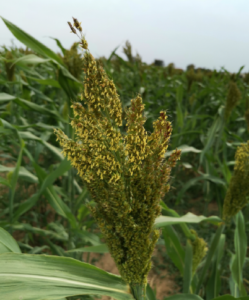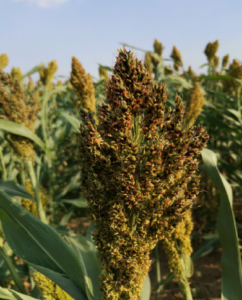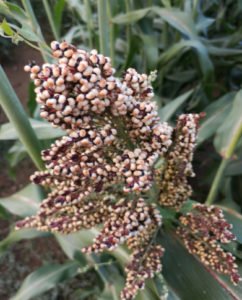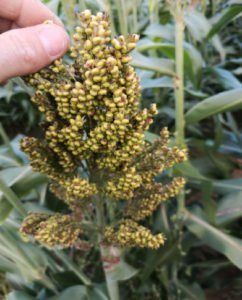8 T/ha of grain sorghum in Northern France… soon possible?


Dr. Walter A.J. de Milliano is a pioneer of sorghum made in the Netherlands, where he has been cultivating sorghum for twenty years. In 2020, he decided to extend his testing surfaces to France in order to measure sorghum yield potentials in this area. “Climate change has an impact on precipitation level which has been lessening from spring to fall. Cereal growers are therefore looking for new crops with less water requirements than the ones they have been usually growing. As long as these sorghum varieties are productive, of course!”, he specifies.
To find out, a trial was carried out on 1 ha in Northern France in partnership with Gauthier Dejaiffe, French farmer, whose cereal farm is located 100 km north from Paris. Two Dutch grain varieties of 18 to 25 g (thousand-seed) were tested with Gauthier Dejaiffe who had never grown sorghum before.

5 to 8 T/ha depending on the variety
With a 120 to 160 day-cycle, the sorghum varieties tested yielded 5 T/ha with 12% humidity only with the 1st variety and almost 8 T/ha with the 2nd variety.
Dr. Walter A.J. de Milliano enthusiastically explains why these experimental results are promising: “Yield results give us a hint about the potential of Dutch sorghum under real farming conditions. They reveal that these sorghum varieties can be produced in the north of Paris not only for fodder and methanization purposes, as in the Netherlands, or biofuel, but also for grain. It also suggests that there could be some diversification opportunities for wheat producers in these regions of northern France, with gluten-free grain sorghum. In addition, grain sorghum can be a source of bioenergy”.

Diversification without investment
Gauthier Dejaiffe, farmer, underlines other advantages: “Sorghum is the crop of the future which, due to its rustic feature, does not require any specific investment in equipment; it is trendy thanks to its low level of input needs and its low water requirement (less than maize). Sorghum improves soil structure through its root system and can be planted in heterogeneous soils with less potential. It gives us a possibility to introduce a new crop to the rotation. ”
According to him, the potential is also a financial one thanks to the good yield-level – between 50 and 80 quintals / ha (in grain) – of the varieties tested. Furthermore, he is motivated to continue the experiment. “Next year we will have trials with two more varieties, including a hybrid; one part of the crop will be harvested for silage in order to test its methanogenic power knowing that the combination of starch and sugar in the sorghum plant can be superior to a maize”.

Get involved in finding market opportunities
“In order to develop sorghum in our regions, we need markets and collectors. We are considering sorghum processing projects in our region with a view to establishing a local circular economy and thereby increasing interest in this crop.“
Continue ?
Sorghum dynamics around the world

Sorghum has more than one tricks to offer













